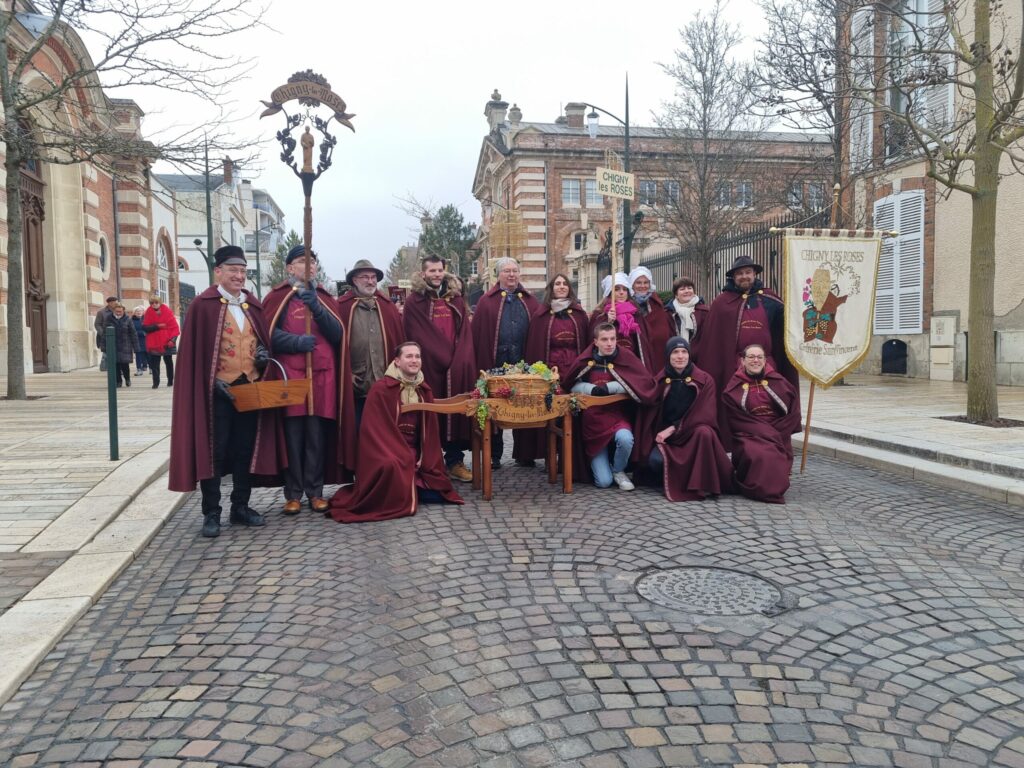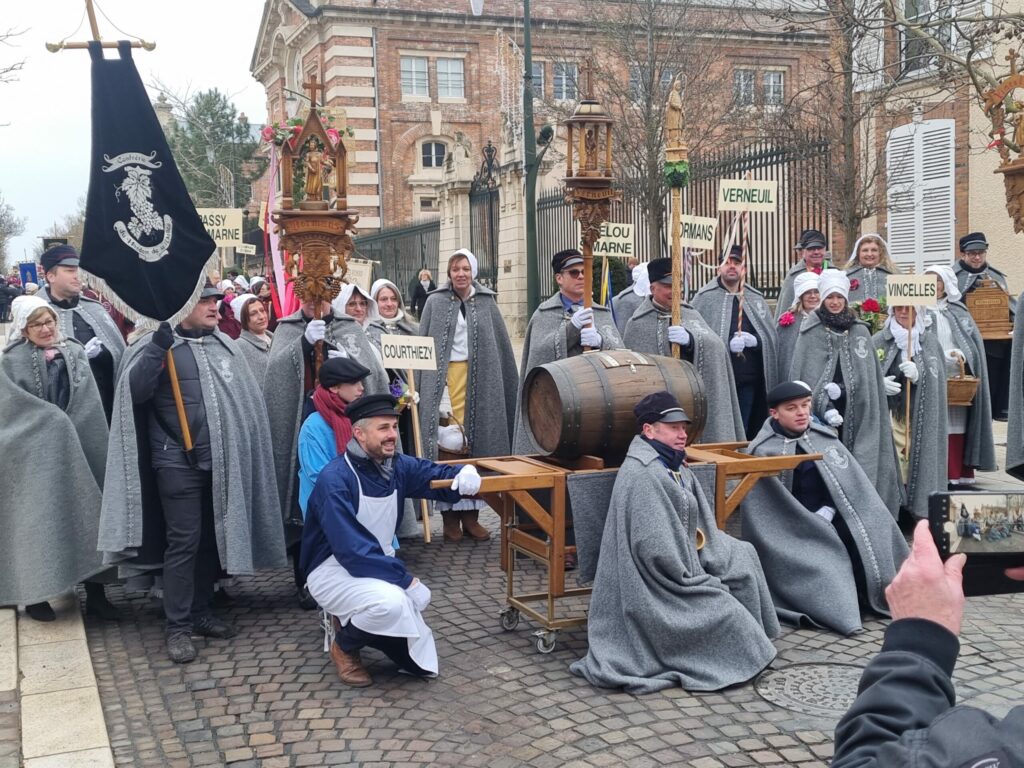Every year, around January 22nd, confreres from cities in the Champagne region (1:30 from Paris) gather to express gratitude to Saint Vincent for the past harvest and seek protection for the upcoming harvest.
The procession commences with the baton of Saint Vincent, followed by the standard or statue of the patron saint of winegrowers.
Parade participants don traditional costumes: bagnolets dresses for ladies and girls, and blue blouses, white aprons, and tonneau caps for men and boys.
Chargers adorned with foliage and flowers, wine-growing instruments, a barrel of new wine, and a pyramid of brioches complete the scene.
During this celebration, a mass is held in the city’s church, the final destination of the procession.
After these ceremonies, a banquet is prepared, featuring the renowned sparkling wine.
Who is Saint Vincent?
Saint Vincent, a deacon and martyr from Zaragoza (Spain) in the 4th century, is considered the Patron Saint and protector of vineyard workers.
Legend has it that during the siege of Zaragoza in 542 by Childebert and Clotaire (kings of Paris and Soissons, respectively), the attackers, moved by the piety of the inhabitants who were penitent and marching behind the body of Saint Vincent, decided to negotiate the relics of Saint Vincent in exchange for lifting the siege. These relics were then placed in the abbey of Sainte-Croix-Saint-Vincent in Saint-Germain-des-Prés, near Poitiers.
The reason why Saint Vincent became the patron saint of winegrowers is not entirely clear. Some suggest it’s due to his martyrdom, symbolizing the religious connection between blood and wine (the Eucharist).
According to the legend, he was tortured on a wine press wheel, and the association with his name, Vincent (wine), and penny (blood) is easily made.
His festival falls on January 22nd, coinciding with the start of vine pruning, marking the end of their winter rest: “Good Saint Vincent, a powerful man, makes the sap rise to the branch.”
Tradition and History of the Champagne Festival
In the past, as noted by Émile Moreau, the feast of Saint Vincent was preceded by bell ringing, bonfires, cannon salutes, rifle shooting, parades with violin players, and, of course, the tasting of new wine.
Today, the typical program for the Feast of Saint Vincent, organized by the brotherhood on January 22nd or on the preceding or following Saturday or Sunday for convenience, includes a procession to the church, featuring a band, the baton of Saint Vincent, children and teenagers in antique costumes, and confreres in traditional attire.
The parade stops at the church for mass, a sermon, and the blessing of new wine and brioches. The president of the brotherhood typically pours wine from the barrel into the chalice. The celebration then moves to a party room for wine-related discussions, diploma presentations to competition winners, and the opening of champagne bottles on decorated tables.
In some communities, the bouquets adorning the brioches are auctioned for the benefit of the brotherhood.
The day concludes with a banquet, balls, and various festivities where champagne flows abundantly, and the merits of different bottles are compared.
In the past, young people in some communities, especially in Aube, went door-to-door on the eve of Saint Vincent, ordering wine and supplies for the banquet, often accompanied by a character dressed as an old man, the Elder of Saint Vincent or Saint Bacchus.
The final moments of the celebration are filled with joyous music, lively dancing, and an exuberant atmosphere of celebration.
The Feast of Saint Vincent in Champagne not only pays homage to winemaking tradition but also serves as a testament to the rich cultural heritage and community spirit that defines this unique region.
As the lights dim and the last toast is made, the memory of yet another memorable celebration remains, where joy, friendship, and the passion for champagne brought hearts together in a truly unforgettable party.
May Saint Vincent’s blessing continue to illuminate the Champagne vineyards for many years to come, filling glasses with the contagious joy of this extraordinary festival.



